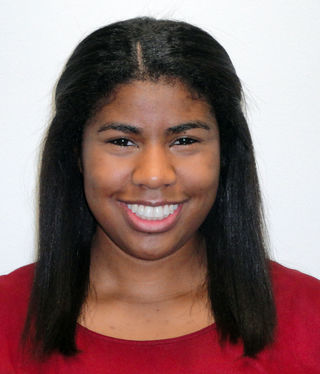
Body-Focused Repetitive Behaviors
How to Treat Body-Focused Repetitive Behaviors
Behavioral interventions and medications may help patients overcome their urges.
Posted March 12, 2019 Reviewed by Davia Sills
Key points
- Body-focused repetitive behaviors are disorders that manifest as hair-pulling, skin-picking, or nail-biting.
- BFRBs can cause both considerable emotional distress and physical damage, but remain widely misunderstood.
- Behavioral treatments—notably Habit Reversal Training or ACT—are currently the most effective approaches.
- Medications have shown limited promise, but supplementing with N-acetyl cysteine may help with hair-pulling.

The following post was authored by Emily Ricketts, Ph.D., a Clinical Specialist in the Division of Child and Adolescent Psychiatry at the University of California, Los Angeles.
Body-focused repetitive behaviors, such as hair pulling, skin picking, and nail-biting, are commonly occurring behaviors, with rates ranging from 14 to 60 percent of the population.1-4 BFRBs result in varying degrees of physical damage to the body, impairment in emotional or social functioning, and loss of productivity.3 For some, BFRBs may not cause any significant problems, but for others, treatment is paramount to improving quality of life and preventing further bodily harm. While individuals may experience improvement following behavior therapy and/or medication, BFRB symptoms tend to follow a chronic, fluctuating course over a lifetime.5
What Treatments Work Best Against BFRBs?
At this time, there is considerable research support for behavioral interventions for BFRBs, particularly Habit Reversal Training.6-7 HRT is a treatment involving increasing awareness of engagement in BFRBs and associated urges to engage in BFRBs. With this increased awareness, the individual can engage in a behavior that competes with the BFRB, like clenching fists, clasping hands, or pressing hands into the lap whenever the urge to pick or pull arises.
Part of this training involves receiving support from a valued person through prompts and praise for use of the competing movement. Stimulus control is also a focus of HRT and involves identifying environmental or emotional triggers for BFRB engagement (e.g., talking on the phone, being alone in the bathroom, feeling worried) and making relevant changes to make it more challenging to perform the BFRB. Self-monitoring of BFRB occurrences and urges outside of the training session is a standard treatment component to inform understanding of triggers and track progress over time.6-7
Another behavioral intervention is a Comprehensive Model for Behavioral Treatment (ComB) of Trichotillomania—a tailored treatment designed to identify and intervene on the specific factors driving an individual’s hair pulling. Although initially developed for hair pulling, this treatment is applicable to other BFRBs.
The first component involves the identification of cues (e.g., settings, moods, visual or tactile triggers, and thoughts) that trigger both the urge to pull and pulling; the specific behaviors or movements involved in pulling; and positive or negative post-pulling consequences (e.g., physical sensations, emotions, social evaluation by others) that may drive or stop pulling episodes. The treatment provider then organizes information about the patterns of urges and pulling into cognitive, affective, awareness-related, sensory, and environmental domains to be addressed during treatment.
The provider then incorporates relevant treatment components to address triggers to pull as they relate to each of these domains. Treatments may include challenging the distorted thinking surrounding pulling (e.g., “I will only pull one hair”), relaxation training, awareness training, stimulus control, competing responses, and sensory stimulation or substitution; a point system for engaging in treatment may also be used.9 Patients also monitor pulling and associated triggers and deterrents throughout treatment.
Can ACT Help with BFRBs?
Following the introduction of these behavioral treatments, researchers have begun to supplement them with additional components to better address emotion-focused hair pulling. One such treatment is acceptance-enhanced behavior therapy for trichotillomania and chronic skin picking.10-11
This treatment blends Acceptance and Commitment Therapy with Habit Reversal Training and targets pulling performed to regulate other urges and unpleasant emotional experiences or thoughts. The treatment promotes acceptance that urges to pull and unpleasant thoughts and emotions naturally rise and fall for all people, and emphasizes that individuals work on responding to these urges, emotions, and thoughts in a way that is consistent with their personal life values, instead of by engaging in the BFRB.10-11
Another treatment that has been investigated is dialectical behavioral therapy-enhanced habit reversal training.12 This treatment also addresses emotion-focused hair pulling by training patients to be mindful (i.e., to engage in present-focused awareness) of urges to pull, pre-pulling behaviors, and other triggers to pull (e.g., thoughts, feelings, environment, sensations). Building on this mindfulness, patients can engage in active skills to regulate unpleasant emotions and tolerate urges.
Can Medications Treat BFRBs?
Compared with behavioral interventions, medications for BFRBs have shown more limited promise. Use of N-acetyl cysteine (NAC), a well-tolerated supplement available over the counter, has shown positive therapeutic effects on BFRB symptoms, particularly for adults with hair pulling13 and skin picking,14 and children and adolescents with nail-biting.15 NAC acts on glutamate, a neurotransmitter implicated in the brain’s reward system, which is believed to play a role in BFRB occurrence.
Selective serotonin reuptake inhibitors and clomipramine may provide benefit for some, especially for those with co-occurring anxiety or depression.16 There is also some evidence to suggest Naltrexone, an opioid antagonist, may be beneficial in treating hair pulling for those who lack flexibility of thought and have a family history of alcohol or substance use. Olanzapine, an antipsychotic medication, has shown positive effects on hair-pulling symptoms among adults.16-17
While behavior therapy and medications for BFRBs have helped many, there is room for considerable advancement. Identifying the precise biological and behavioral factors that influence whether or not one benefits from a given treatment is a crucial next step in improving treatment response.
The TLC Foundation for Body-Focused Repetitive Behaviors provides a free set of expert guidelines on BFRB treatment.
LinkedIn image: Quality Stock Arts/Shutterstock
Facebook Image: Arman Novic/Shutterstock
References
1. Houghton, D. C., Alexander, J. R., Bauer, C. C., & Woods, D. W. (2018). Body-focused repetitive behaviors: More prevalent than once thought? Psychiatry Research, 270, 389-393.
2. Siddiqui, E. U., Naeem, S. S., Naqvi, H., & Ahmed, B. (2012). Prevalence of body-focused repetitive behaviors in three large medical colleges of Karachi: A cross-sectional study. BMC Research Notes, 5, 614.
3. Solley, K., & Turner, C. (2018). Prevalence and correlates of clinically significant body-focused repetitive behaviors in a non-clinical sample. Comprehrensive Psychiatry, 86, 9-18.
4. Teng, E. J., Woods, D. W., Twohig, M. P., & Marcks, B. A. (2002). Body-focused repetitive behavior problems. Prevalence in a nonreferred population and differences in perceived somatic activity. Behavior Modification, 26, 340-360.
5. Grant, J. E., & Chamberlain, S. R. (2015). Trichotillomania and skin-picking disorder: Different kinds of OCD. The Journal of Lifelong Learning in Psychiatry, 13, 184-189.
6. Azrin, N. H., & Nunn, R. G. (1973). Habit-reversal: A method of eliminating nervous habits and tics. Behaviour Research and Therapy, 11, 619-628.
7. Morris, S. H., Zickgraf, H. F., Dingfelder, H. E., Franklin, M. E. (2013). Habit reversal training in trichotillomania: Guide for the clinician. Expert Review of Neurotherapeutics, 13, 1069-1077.
8. Mansueto, C. S., Stemberger, R. M. T., Thomas, A. M., & Golomb, R. G. (1997). Trichotillomania: A comprehensive behavioral model. Clinical Psychology Review, 17, 567-577.
9. Mansueto, C. S., Golomb, R. G., Thomas, A. M., & Stemberger, R. M. T. (1999). A comprehensive model for behavioral treatment of trichotillomania. Cognitive and Behavioral Practice, 6, 23-43.
10. Flessner, C. A., Busch, A. M., Heideman, & Woods, D. W. (2008). Acceptance-enhanced behavior therapy (AEBT) for trichotillomania and chronic skin picking: Exploring the effects of component sequencing. Behavior Modification, 32, 579-594.
11. Woods, D. W., & Twohig M. P. (2008). Trichotillomania: An ACT-enhanced behavior therapy approach. Therapist guide. Oxford, UK: Oxford University Press, Inc.
12. Keuthen, N. J., Rothbaum, B.O., Welch, S. S., Falkenstein, M., Heekin, M., Jordan, C. A., … Jenike, M. A. (2010). Pilot trial of dialectical behavior therapy-enhanced habit reversal for trichotillomania. Depression and Anxiety, 27, 953-959.
13. Grant, J. E., Odlaug, B. L., & Kim, S. W. (2009). N-acetylcysteine, a glutamate modulator, in the treatment of trichotillomania: A double-blind, placebo-controlled study. Achives of General Psychiatry, 66, 756-763.
14. Grant, J. E., Chamberlain, S. R., Redden, S. A., Leppink, E. W., Odlaug, B. L., & Kim, S. W. (2016). N-acetylcysteine in the treatment of excoriation disorder: A randomized clinical trial. JAMA Psychiatry, 73, 490-496.
15. Ghanizadeh, A., Derakhshan, N., & Berk, M. (2013). N-acetylcysteine versus placebo for treating nail biting, a double blind randomized placebo controlled trial. Anti-inflammatory & Antiallergy Agents in Medicinal Chemistry, 13, 223-228.
16. Grant, J. E. (2015). Review of psychopharmacological approaches for trichotillomania and other body-focused repetitive behaviors. Current Treatment Options in Psychiatry, 2, 422-431.
17. van Ameringen, M., Mancini, C., Patterson, B., Bennett, M., & Oakman, J. (2010). A randomized, double-blind, placebo-controlled trial of olanzapine in the treatment of trichotillomania. The Journal of Clinical Psychiatry, 71, 1336-1343.



